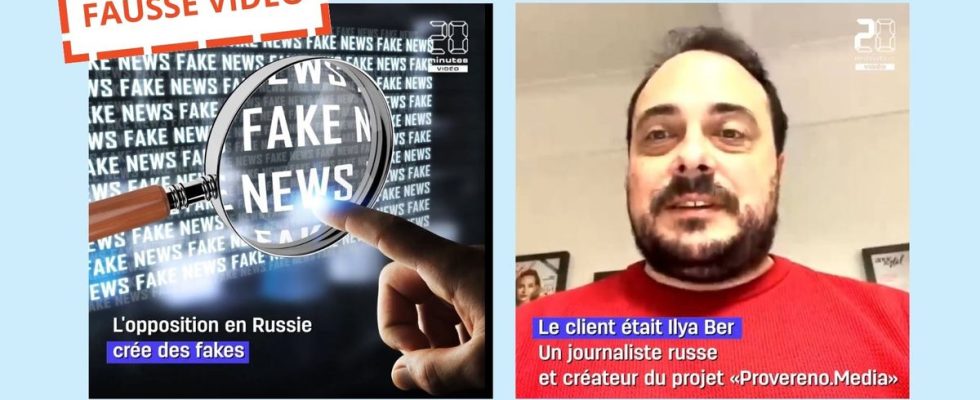We would like to say that you get used to it, but no. One more time, 20 minutes saw his name being reused for Russian propaganda purposes. Last October, hackers copied several European media sites, including ours. This time it was our videos that were targeted.
It all starts this Monday, when we receive an alert at the editorial office by Alexandre Capron, journalist for Les Observateurs de France 24. One of our videos would circulate on the Telegram social network, an instant and encrypted messaging platform and more exactly on a Russian channel named “Раньше всех. Ну почти. Спецоперация » [ce qui veut dire « Plus tôt que d’autres. Presque. Opération spéciale »]. To date, it is followed by more than 41,000 people.
A false culprit designated
Without this alert, the signed video 20 minutes could have continued to circulate. The problem is that it was never produced in-house but uses all the codes of our graphic charter and is confusing. The name of one of our journalists from the video department, Suzana Nevenkic, is even used to designate her as the author of this production.
But what is this video about? In two minutes, she goes back over the history of the covers of Charlie Hebdo in Russia. Six months earlier, six false front pages of the satirical magazine had been relayed on Russian Telegram channels. According to the video which would have been produced by our editorial staff, its author would be Ilya Ber, a Russian journalist in exile and founder of the verification media proveno.
“An almost identical video”
Still a little in shock to see her name attached to this story, Suzana Nevenkic confirms that she is not at the origin of this video. “Within my team, it disturbs us. The video is almost identical to ours,” she says. And for good reason, all the graphic codes and elements that we could find in our video productions are present… “even the strongest”. For example, the logo at the top right that fills in as you go is no small feat, according to Suzana.
However, after several viewings, the eye of our videographer journalist still detected some inconsistencies. The font wasn’t exactly the same, it’s not the same opening or ending credits, and the speed was changed. But would it have been possible to detect these differences for someone outside the video department? Not sure. On his side, The observers still notice syntax errors in the video, for example the terms “global media” or “western satirical media”.
A simple copy
Within the editorial staff 20 minutes, one question remains unanswered. Has the template of our videos been stolen or has the charter only been reproduced identically? On the video side, Suzana Nevenkic wonders if she has not been hacked. Indeed, a month earlier, his computer had gone crazy. “Web pages opened very quickly and randomly. I no longer had control over my computer,” she says.
Should we see a link? Not necessarily, answers the tech side. “There is no pirating or hacking,” says our CTO (Chief Technical Officer) Aurélien Capdecomme. The attacker mainly had to download one of our videos from the platform where we usually publish them and replace the elements with what he wanted instead. “You just have to know how to download”, he adds… and ensure video editing, no doubt.
The mechanic repeats itself
Since the start of the war in Ukraine, many media platforms have been usurped to spread pro-Russian propaganda. As of last October, the website of 20 minutes had been copied. Same colors, same presentation. The only distinctive element: the URL “20minuts.com”. In the middle of real articles, was broadcast information around Ukrainian lies or violence committed by kyiv troops. It was then the parent company of Facebook – Meta – which had given the alert to a Russian disinformation network which would have invested more than 100,000 euros in this small manipulation.
More recently, The Parisian also paid the price for this disinformation campaign. The daily was then accused of taking a stand for Putin and against Ukraine. Once again, the reader finds an identically copied site. But once again, the media was not the source of the content and the information had been copied to a different domain name. The newspaper has moreover announced to lodge a complaint in order to recover the fraudulent domain name.

